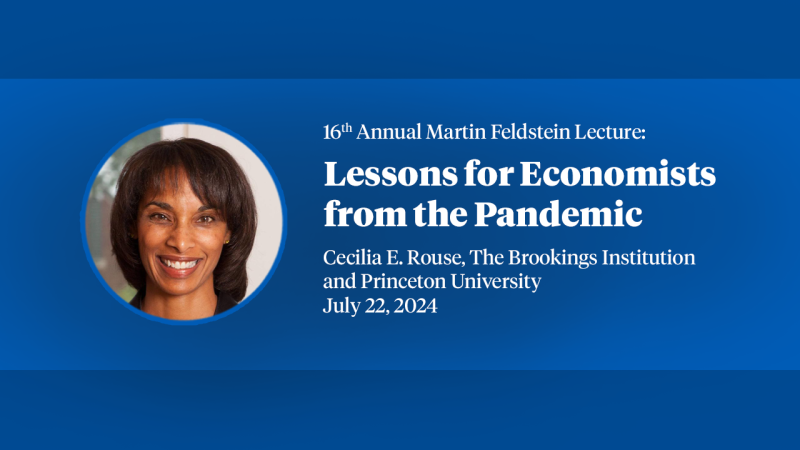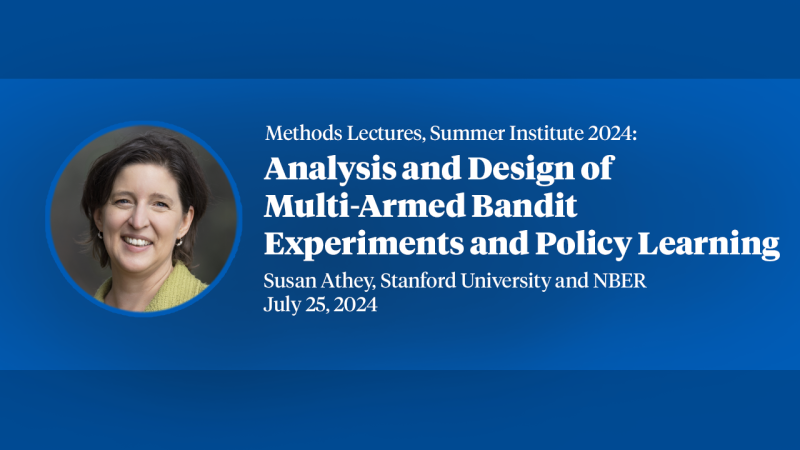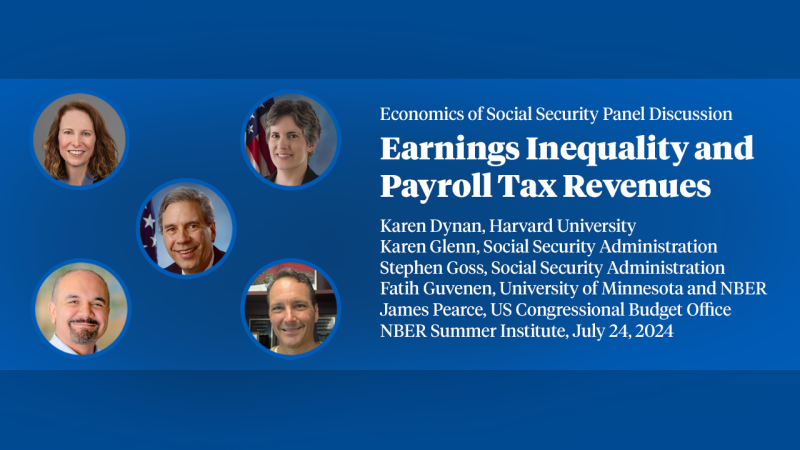Empirical Analysis of Corruption
Although corruption is considered a significant problem in much of the developing world, for many years there was virtually no hard economic data on it. Instead, economic studies for the most part relied on cross-country datasets consisting of businessmen's general perceptions of the relative corruption levels of different countries.1 The lack of data meant that it was difficult to estimate the true costs of corruption, to test which theories of corruption were borne out in the data, and to understand what approaches might be most effective in reducing corruption.
In recent years, a variety of approaches have been taken to ferret out more accurate indicators of corrupt activity. My recent empirical work on corruption examines how this improved data can be used to answer three questions: what are the costs of corruption; how can corruption be ameliorated; and, what theories of corruption best match the data?
The Costs of Corruption
Corruption may matter for economic efficiency if theft of government resources increases the cost of government activity. Then, otherwise worthwhile government projects - such as redistribution schemes or public works projects - will no longer be cost effective. I examine this possibility 2in my study of a large Indonesian anti-poverty program that distributed subsidized rice to poor households. I estimate the extent of corruption in the program by comparing administrative data on the amount of subsidized rice distributed in a given region with survey data on the amount of the subsidized rice actually received by households in that region. The central estimates suggest that, on average, at least 18 percent of the rice appears to have disappeared. I show statistically that the "missing rice" was much more concentrated in particular regions than would be predicted by random chance. Therefore, it looks as though in some regions much of the rice was not distributed at all, rather than there simply being misreporting in the survey data.
In the same paper, I construct a welfare calculation of the benefits of the program, both as it was implemented and using a counterfactual with the same targeting of beneficiaries but without corruption. I estimate that the welfare losses from this "missing rice" may have been large enough to offset the potential welfare gains from the program's redistribution. In other words, the program without corruption might have been cost-effective but, in the presence of corruption, it likely was not. These estimates suggest that corruption can be costly enough to substantially impede redistribution.
Corruption also may lead to inefficiency if it undoes the government's ability to correct an externality. For example, if someone can bribe a police officer or judge instead of paying an official fine, then the marginal cost of breaking the law is reduced from the official fine to the amount of the bribe. Even worse, if the police officer extracts the same bribe regardless of whether the person has broken the law, then the marginal cost of breaking the law falls to zero and the law ceases to have a disincentive effect altogether.
Patrick Barron and I examine this possibility in a paper on trucking in Indonesia.3 We had surveyors travel with truck drivers on 304 trips to and from the Indonesian province of Aceh, recording data on more than 6,000 illegal payments made at police and military checkpoints and at weigh stations. We believe that this represents the first large-scale survey that has ever directly observed actual bribes in the field.
Using these data, we examine what happens when these trucks stop at weigh stations. Driving an overweight truck is a classic example of an activity that generates an externality. While there can be benefits to a trucker from loading on additional weight, the damage the truck does to the road rises to very rapidly with the truck's weight. For this reason, governments around the world weigh trucks and impose fines on trucks that are overweight.
In our data, we find that virtually all of the trucks in our sample were substantially over the weight limits - and, in fact, 42 percent of trucks were more than 50 percent over the legal weight limit. The data also suggest that corruption at weigh stations is a likely culprit. According to the law, all trucks more than 5 percent over the legal weight limit are supposed to be ticketed, to immediately unload their excess cargo, and to have their drivers appear in court to face a fine. In fact, virtually none of the truckers received an official ticket. Instead, virtually all of them paid a bribe. While more overweight trucks did pay higher bribes, the bribe did not change substantially with the truck's weight. Even those trucks that were not overweight at all still had to pay a bribe. Corruption thus dramatically reduced the marginal cost of driving overweight trucks, leading to more of them and ultimately to a more rapidly degraded road.
Approaches to Reducing Corruption
Given that corruption may involve efficiency costs, a natural question is how it can be ameliorated. To investigate this, I designed and conducted a randomized field experiment that took place in over 600 Indonesian villages, each of which was building a small road.4 The experiment evaluated several theories about how to improve monitoring and reduce corruption. One approach, dating back at least to Becker and Stigler,5 suggests that the right combination of monitoring and punishments can control corruption. In practice, however, the very individuals tasked with monitoring and enforcing punishments themselves may be corruptible, which suggests that alternative approaches, such as community-based monitoring, may be more effective. Given these competing views, I randomly allocated each village into one of three experimental treatments: one treatment increased traditional top-down audits by the central government audit agency; two treatments increased community-based monitoring, one by increasing participation at community-based project monitoring meetings and one by providing anonymous comment forms to villagers, allowing them to participate with a reduced fear of retaliation by powerful village elites.
To measure corruption, engineers dug core samples in each road to estimate the quantity of the materials used; they surveyed local suppliers to estimate prices paid; and they interviewed villagers to determine the wages paid on the project. From these data, I was able to estimate what each project actually cost to build, and then to compare this to what the village reported it spent on the project on a line-item by line-item basis.
Using this data, I find that government audits reduce corruption by 8 percentage points or about 30 percent from the baseline level. By contrast, increasing grass-roots participation in monitoring has little impact on average, reducing missing expenditures only in situations with limited free-rider problems and limited elite capture.6 Interestingly, the audits revealed that there was substitution among alternative forms of corruption: although audits reduced missing expenditures, they led to increases in nepotism (that is, the hiring of family members of the project leader or village officials to work on the project). On balance, the results demonstrate that the traditional economic approach to fighting crime - increasing the expected cost of crime by increasing the probability of being caught - can play an important role in reducing corruption, even in a highly corrupt environment where those doing the monitoring are themselves potentially corruptible.
One potential explanation for why the increase in grass-roots participation did not reduce corruption is that villagers may have limited information about corruption. In another paper, I compare Indonesian villagers' stated beliefs about corruption in the road-building project with the engineer's estimates of corruption in the roads.7 I find that villagers' beliefs contain real information about corruption, and that villagers are sophisticated enough to distinguish between corruption in a particular road project and general corruption in the village. However, villagers only appear to be able to detect corruption in the form of marked-up unit prices, not in overstated quantities. Naturally, in response to this corrupt officials hide almost all of their corruption by inflating quantities, which are hard to detect, rather than by marking up unit prices, which are easier to detect. This is one reason why professional auditors, who are more adept at detecting sophisticated corruption schemes, may be more effective than ordinary villagers at monitoring corruption.
In another paper, I examine how changing levels of grass-roots participation in village activities affect governance outcomes. I focus on changes in such participation that is associated with variation in access to television and radio. Specifically, I consider the hypothesis first suggested by Robert Putnam in Bowling Alone (2000) that television leads to a reduction in participation in a broad range of social and governmental activities, which in turn leads to worse governance.8 In this research, I exploit the fact that volcanoes in East and Central Java block television and radio signals in some areas, but not in others. I find that better signal reception, which is associated with more time watching television and listening to the radio, is associated with substantially lower levels of participation in a wide range of social and village government activities, including lower levels of participation in the meetings in which villages monitor corruption in the road projects. However, despite this impact on participation, improved television and radio reception does not appear to affect the quality of village governance, at least as measured by corruption in the road projects. These findings echo my experimental results and suggest that additional grass-roots participation, whether induced experimentally or driven by changes in media access, does not appear to be related to improvements in village governance.
The Theory of Corruption
The work just described focuses on strategic interaction between the group that can benefit from a government program, in this case the villagers and the auditors, and one or more village officials who are charged with implementing the program. It does not consider potential strategic interactions between village officials. In other settings, however, strategic interactions between corrupt agents themselves become important. In this view, first articulated by Shleifer and Vishny,9 corrupt agents behave like profit maximizing firms, and the level of corruption is determined not just by external monitoring, but also by the structure of the "market" for bribes, the elasticity of demand for the officials' services, and the degree to which corrupt officials can coordinate with one another in setting "prices" for bribes.
Barron and I use the data we collected on the bribes that truck drivers pay to empirically test the idea that market forces in part determine the level of corruption. We exploit the fact that, during the period we studied, the number of checkpoints along one of the roads was reduced, in accordance with a peace agreement signed earlier in the year. We use this change in market structure to estimate the elasticity of the average bribe paid with respect to the expected number of checkpoints. We show that the average price paid at checkpoints increases when the number of checkpoints declines. The results provide evidence for the Shleifer-Vishny view that market structure has an impact on the total amount of bribes charged, and more specifically, that price setting in this particular context is decentralized rather than centralized. These findings highlight the need to consider strategic interactions between corrupt agents in designing effective anti-corruption policy.
My very recent work continues to apply economic theory to the problems of corruption. My paper co-written by Robin Burgess, Matthew Hansen, Peter Potapov, and Stefanie Sieber explores the notion that a larger number of competing officials reduces the return to each corrupt official and increases the quantity of the activity that bribes might otherwise impede.10 We explore this idea in the context of illegal logging in Indonesia, using satellite data on deforestation combined with official production statistics. We show that as the number of political jurisdictions increase, so that there are more bureaucracies with the potential to facilitate illegal logging in a province, logging rates increase and prices fall.
Next Steps
Despite recent advances, empirical research on corruption is still a nascent field. The number of rigorous, careful estimates of the social costs of corruption is still quite small, and there are reasons to believe there may be substantial heterogeneity across contexts. For example, econometric estimates of the magnitude of corruption vary from about 2 percent in the case of the U.N. Oil for Food Program 11 to as much as 87 percent in the case of funding for public schools in Uganda.12 Moreover, a wide range of commonly used anti-corruption policies, from the efficiency wage idea proposed by Becker and Stigler to crackdowns by anti-corruption commissions, are still remarkably under-studied. The recent advances in corruption measurement suggest that understanding these questions will be a fruitful area for future research.
1. P. Mauro, "Corruption and Growth", Quarterly Journal of Economics 110 (3), (1995), pp. 681-712.
2. B.A. Olken, "Corruption and the Costs of Redistribution: Micro Evidence from Indonesia", Journal of Public Economics, 90 (4-5), (2006,) pp. 853-70.
3. B.A. Olken and P. Barron, "The Simple Economics of Extortion: Evidence from Trucking in Aceh", NBER Working Paper No. 13145, June 2007, and Journal of Political Economy, 117 (3), (2009), pp. 417-52.
4. A related study that examines the efficiency costs of corruption in the drivers' license department in India suggests that corruption allows people who do not know how to drive to obtain licenses. See M. Bertrand et al., "Does Corruption Produce Unsafe Drivers?" NBER Working Paper No. 12274, June 2006, and "Obtaining a Driving License in India: An Experimental Approach to Studying Corruption?", Quarterly Journal of Economics, 122 (4), (2007), pp. 1639-76.
5. G.S. Becker, and G.J. Stigler, "Law Enforcement, Malfeasance, and Compensation of Enforcers", Journal of Legal Studies, 3(1), (1974), pp. 1-18.
6. B.A. Olken, "Monitoring Corruption: Evidence from a Field Experiment in Indonesia", NBER Working Paper No. 11753, November 2005, and Journal of Political Economy 115 (2), (2007), pp. 200-49.
7. In particular, the increased grass-roots monitoring was only effective in reducing theft of wages, which occurs when villagers are asked to work on a project on a volunteer basis but project officials falsely claim that they paid them wages. Monica Singhal and I explore this concept of "volunteer" work on public infrastructure projects more systematically in our paper on "Informal Taxation," where we show that type of labor is a non-trivial component of local public finance in developing countries. Niehaus and Sukhtankar have also done related research on the incentives to steal wage payments in India. See B.A. Olken and M. Singhal, "Informal Taxation", NBER Working Paper No. 15221, August 2009, and P. Niehaus and S. Sukhtankar, "Corruption Dynamics: the Golden Goose Effect," U.C.S.D. Working Paper, 2010.
8. B.A.Olken, "Corruption Perceptions vs. Corruption Reality," NBER Working Paper No. 12428, August 2006, and Journal of Public Economics, 93 (7-8), (2009), pp. 950-64.
9. B.A. Olken, "Do Television and Radio Destroy Social Capital? Evidence from Indonesian Villages", NBER Working Paper No. 12561, October 2006, and American Economic Journal: Applied Economics, (14), (2009), pp. 1-33.
10. R. Burgess, M. Hansen, B.A. Olken, P. Potapov, and S. Sieber, "The Political Economy of Deforestation in the Tropics", mimeo, MIT.
11. C.-T. Hsieh and E. Moretti, "Did Iraq Cheat the United Nations? Underpricing, Bribes, and the Oil for Food Program", NBER Working Paper No. 11202, March 2005, and Quarterly Journal of Economics, 121(4), (2006), pp. 1211-48.
12. R. Reinikka, and J. Svensson, "Local Capture: Evidence from A Central Government Transfer Program In Uganda", Quarterly Journal of Economics, 119(2), (2004), pp. 679-705.


